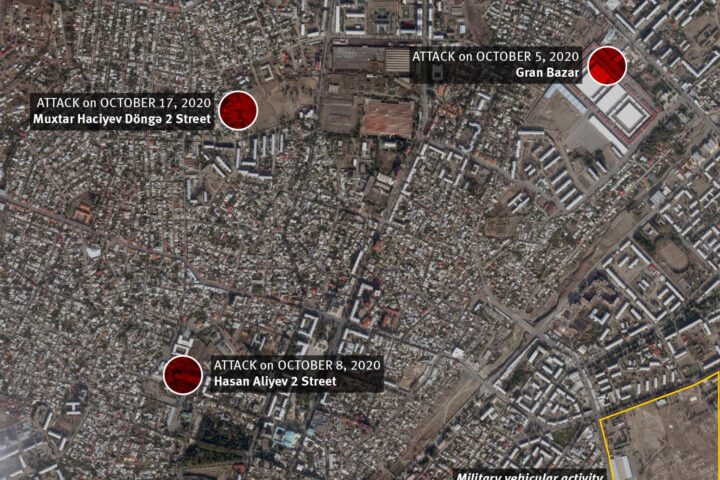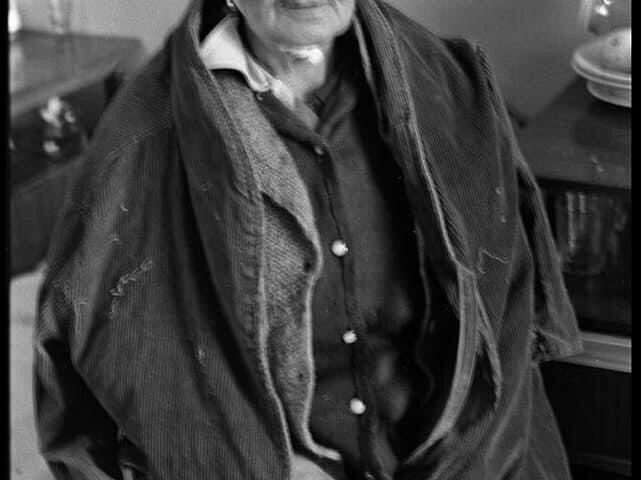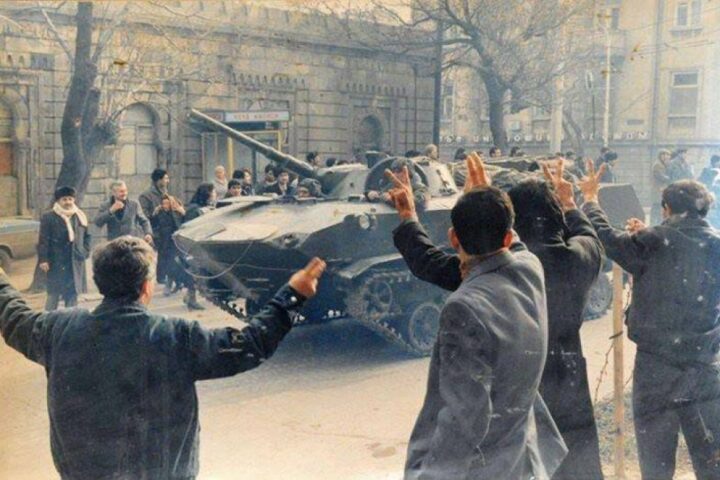Economic situation in NKAO
Regarding the early claims that the economy of NK region was supposedly deliberately neglected by Soviet Azerbaijani authorities, to both “punish” and “root out” Armenians, and this, allegedly, left no choice than for Armenian separatism and military action. Ironically, this argument did not stand the test of time and has been disproved by the fact, that the economic situation of the remaining Armenians in the occupied territories today is hardly better than it was before the war. This is not only the consensus of foreign journalists visiting the occupied territories, but also of the OSCE fact-finding mission in February 2005.[21]
However, authoritative ethnically Armenian Soviet economists maintained in a March 1988 government meeting, which was at the start of the conflict, that the economy of NK autonomous region, if taken separately, was actually better overall than in both Azerbaijan and Armenia, and even all of USSR. In fact, from the point of economic development the NK region in Azerbaijan was second only to Absheron region and its city Baku, the capital, and ahead of other nearly 60 regions of the country. The meeting was chaired by academician Tigran S. Khachaturov, a prominent Armenian economist sent from Moscow, and the following ethnic Armenian high-level officials of Azerbaijan SSR reported: A.Ayriyan, Minister of Timber and Wood-processing of Azerbaijan, L.Davidyan, deputy head of the Department of Construction and Urban Management of the Azerbaijan CPCC, and A. Pogosova, deputy department chief, State Planning Committee (Gosplan).[22]
Mr. Davidyan reported that: “During recent 5-year plans, regarding the activation of housing, preschool institutions, and public-health facilities, the indicators for the specific capital investments for the autonomous oblast were considerably higher than the average for the republic and for its regions.” Mrs. Pogosova, for her part, reported: “In past years, transportation and communication means developed dynamically in the oblast. A railroad line with all the management necessary for operation was activated in the city of Stepanakert [Khankendi – A.B.]. Accelerated development, as compared with the republic as a whole, occurred in motor vehicles: there are 26.3 motor vehicles per 1000 inhabitants of the oblast, as compared with the average of 17.5 for the republic as a whole”.[23]
Before the Armenian aggression, in 1988-89 academic year there were 136 secondary schools, in which the teaching language was Armenian (16,120 students), and 13 inter-ethnic schools (7,045 students) in NK region of Azerbaijan. There were altogether 181 Armenian secondary schools (20,712 students) and 29 inter-ethnic schools (12,766 students) in Azerbaijan in the academic year 1988-1989. In the town of Khankendi (formerly Stepanakert) there was a State Pedagogical Institute with over 2,130 students, mainly Armenians, annually attending its Armenian, Azerbaijani and Russian departments. In addition, there were dozens of technical colleges and vocational training schools in NKAO working in the Armenian and Russian languages.[24]
The meeting chaired by academician Khachaturov produced the following table (Table II), showing NK edging out, overall, Azerbaijan, Armenia and even all of USSR. It becomes obvious that NK region was not only living better than most Soviet people, but received disproportionably more than its economic output, a fact that remains true to this day.
Table II: Comparable Indicators of Social Development as of 1988[25]
|
Items |
Azerbaijan SSR |
NKAO |
USSR |
Armenia SSR |
|
1. Number of hospital beds per 10,000 persons |
97.7 |
101.7 |
130.1 |
86.2 |
|
2. Number of physicians of all specialties per 10,000 persons |
38.4 |
29.1 |
42.7 |
38.6 |
|
3. Number of middle-level medical workers per 10,000 persons |
93.5 |
122.7 |
114.7 |
93.5 |
|
4. Number of public libraries per 10,000 persons |
6 |
13 |
4.8 |
4.1 |
|
5. Number of clubs per 10,000 persons |
5 |
15 |
4.8 |
3.8 |
|
6. Number of movie projectors [movie theaters] per 10,000 persons |
3 |
11.2 |
5.4 |
2.9 |
|
7. Number of children served by preschool institutions (in percentages of size of population of the corresponding age) |
20 |
35 |
57 |
39 |
| 8. Number of students attending firstshift (in percentages of overall
number of students) |
74.3 |
92.5 |
78.2 |
87.8 |
| 9. Housing fund per inhabitant
(square meters) |
10.9 |
14.6 |
14.9 |
13.7 |
|
including: |
||||
|
in urban localities |
12.2 |
14.6 |
14.3 |
13.1 |
|
in rural localities |
9.2 |
14.6 |
16.1 |
15.0 |
Principal vs. Interested parties in NK war: the “Baker Rules”
In regards to the number of parties in the NK conflict, they were specified and cemented already in 1992, in no small part thanks to the U.S. position and specifically, its Secretary of State at the time, James Baker, as then U.S. CSCE/OSCE top negotiator on the NK conflict, Ambassador John Maresca, writes in his numerous scholarly articles on the conflict.[26] It was Secretary Baker who intervened with the Armenian and Azerbaijani foreign ministers to reach an agreement on how Karabakh region was to be represented in the OSCE-sponsored negotiations. The rules, to which all parties agreed and which the OSCE Minsk Group adheres to even today, were simple: in NK conflict, there are two “principal parties” – the Republic of Armenia and Republic of Azerbaijan, and two “interested parties” — the Armenian community of NK and Azerbaijani community of NK. That is the Azerbaijani community of Karabakh was a legally recognized “interested party” to the conflict and thus attends the meetings and signed the May 1994 cease-fire agreement. Since then, these simple and effective rules became known as the “Baker Rules”.
[no_toc]








